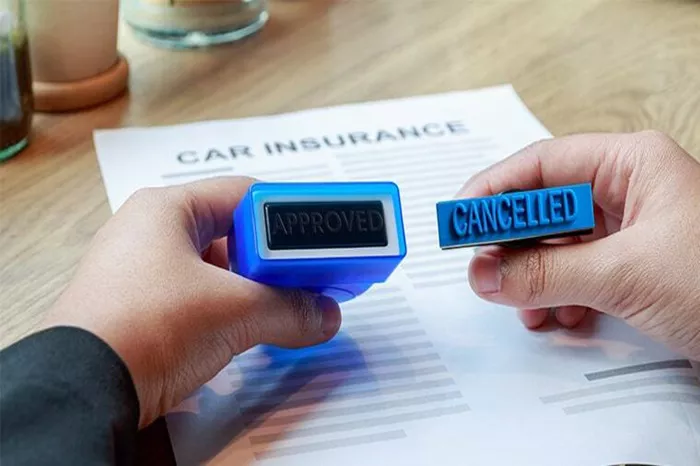Canceling car insurance may seem like a straightforward task, but it involves a series of steps and considerations to ensure a smooth transition and avoid potential pitfalls. Whether you’re switching providers, selling your car, or no longer need a vehicle, understanding the process is crucial. This article will guide you through the steps to cancel your car insurance, highlighting essential points to keep in mind and providing a comprehensive overview of the process.
Understanding the Reasons for Cancellation
Before diving into the cancellation process, it’s important to understand why you might need to cancel your car insurance. Common reasons include:
1. Switching to a Different Insurance Provider: Finding a better deal or more comprehensive coverage with another company.
2. Selling Your Car: No longer needing insurance because you’ve sold your vehicle.
3. Relocating to a Different Area: Moving to a place where you don’t need a car.
4. No Longer Driving: Deciding to rely on public transportation or other means of transportation.
5. Vehicle Storage: Putting your car in long-term storage and not needing active insurance.
Each reason may require a slightly different approach, but the fundamental steps to cancel car insurance remain the same.
Review Your Policy
The first step is to thoroughly review your current car insurance policy. Look for the following details:
1. Cancellation Policy: Each insurance company has specific rules regarding cancellation. These can include notice periods and potential fees.
2. Refunds: Determine if you are eligible for a refund on any unused premium.
3. Renewal Dates: Be aware of your policy’s renewal date to avoid automatic renewals if you plan to switch providers.
4. Coverage Overlap: Ensure there is no lapse in coverage if you are switching providers. Continuous coverage is essential to avoid penalties and legal issues.
Contact Your Insurance Provider
Once you’ve reviewed your policy, the next step is to contact your insurance provider. Here’s how to do it:
1. Reach Out to Customer Service: Call your insurance company’s customer service department. The phone number can usually be found on your insurance card or the company’s website.
2. Prepare Your Information: Have your policy number, personal identification, and reasons for cancellation ready.
3. Inquire About Cancellation Procedures: Ask for specific instructions on how to proceed with the cancellation. This can vary from one provider to another.
Provide Written Notice
Many insurance companies require a written notice to process cancellations. Follow these steps:
1. Draft a Cancellation Letter: Write a formal letter requesting the cancellation of your policy. Include your policy number, personal details, and the effective date of cancellation.
2. Send the Letter: Mail the letter to your insurance provider’s customer service or cancellation department. Some companies may also accept emails or faxes.
3. Keep Copies: Retain a copy of the letter and any correspondence for your records.
Follow Up
After sending your cancellation request, it’s important to follow up to ensure everything is processed correctly. Here’s what to do:
1. Confirm Receipt: Contact your insurance company to confirm they received your cancellation request.
2. Check for Refunds: Inquire about any refunds you are owed for the unused portion of your premium.
3. Verify Cancellation: Ensure that your policy has been officially canceled. Request written confirmation from the insurance provider.
See Also: How Car Insurance Works in the UK
Switching to a New Provider
If you are canceling your current policy to switch to a new insurance provider, follow these additional steps:
1. Research New Policies: Shop around and compare quotes from different insurance companies to find the best deal for your needs.
2. Apply for New Coverage: Once you’ve selected a new provider, apply for coverage. Ensure the start date of the new policy overlaps with the cancellation date of the old policy to avoid any lapse in coverage.
3. Transfer Information: Provide your new insurance details to any necessary parties, such as your lender if you have a financed vehicle.
Selling Your Car
When canceling insurance because you’ve sold your car, make sure to:
1. Notify the DMV: Inform the Department of Motor Vehicles (DMV) about the sale of your vehicle.
2. Remove License Plates: In some states, you may need to return or transfer the license plates.
3. Provide Proof of Sale: Have documentation ready, such as a bill of sale, to show your insurance company.
No Longer Driving
If you’ve decided to stop driving altogether, consider the following:
1. Vehicle Storage Insurance: If you plan to store your vehicle rather than sell it, you might still need comprehensive coverage to protect against theft, vandalism, or natural disasters.
2. Non-Owner Insurance: If you occasionally drive someone else’s vehicle, you might consider non-owner car insurance to provide liability coverage.
Avoiding Penalties and Issues
Canceling your car insurance improperly can lead to several issues, such as:
1. Lapsed Coverage Penalties: Driving without insurance can result in fines, license suspension, and increased future premiums.
2. Financial Liability: Without insurance, you are personally liable for any damages or injuries in an accident.
3. Credit Score Impact: Non-payment of insurance premiums can negatively affect your credit score if it leads to debt collection.
To avoid these issues:
1. Plan Ahead: Ensure your new policy starts before the old one ends.
2. Maintain Continuous Coverage: Avoid any gaps in coverage.
3. Communicate Clearly: Keep open lines of communication with your insurance provider.
Special Considerations
Certain situations require special attention:
1. Military Deployment: If you are deployed, some insurance companies offer storage or suspension options for your policy.
2. Seasonal Vehicles: For vehicles used seasonally (like motorcycles or RVs), consider suspension options rather than cancellation.
3. Multi-Vehicle Policies: If you have multiple vehicles under one policy, canceling insurance on one vehicle may affect the overall policy. Discuss options with your provider.
Conclusion
Canceling your car insurance involves careful planning and communication with your insurance provider. By understanding the reasons for cancellation, reviewing your policy, and following the necessary steps, you can ensure a smooth transition. Whether switching providers, selling your car, or no longer driving, taking the time to handle the process correctly will help you avoid penalties and maintain financial protection.
In summary, the key steps to cancel your car insurance include:
1. Reviewing your policy
2. Contacting your insurance provider
3. Providing written notice
4. Following up on the cancellation
5. Switching to a new provider if necessary
6. Handling special situations appropriately
By following these guidelines, you can navigate the car insurance cancellation process with confidence and ease






















